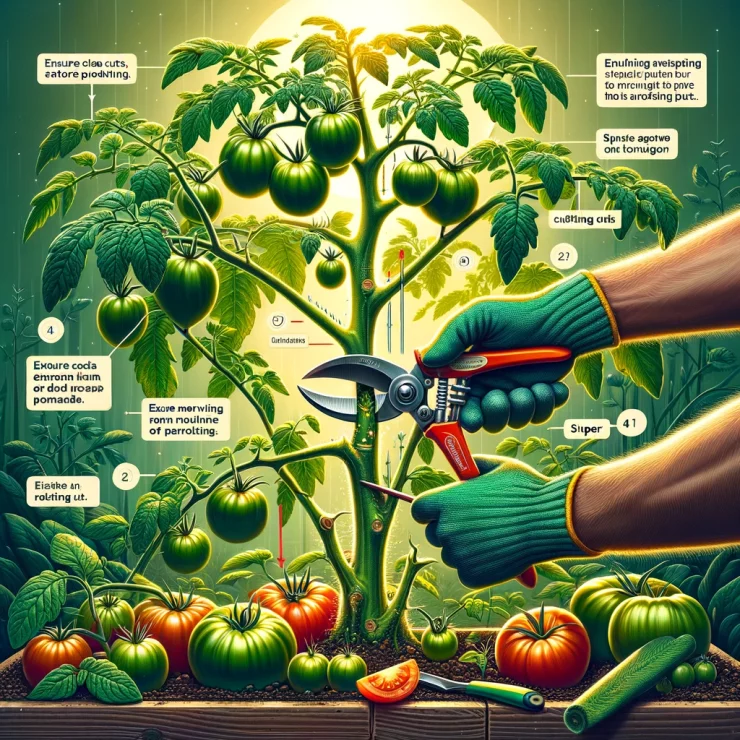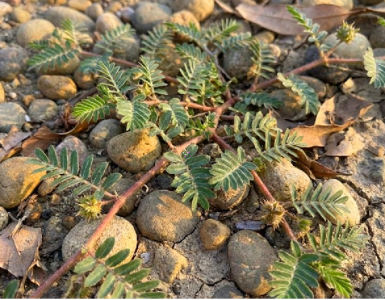Tomatoes are a staple in many gardens, offering a burst of flavor to salads, sandwiches, and sauces. However, achieving healthy, abundant tomato plants requires more than just planting and watering. Pruning plays a crucial role in optimizing plant growth, fruit production, and disease prevention. In this guide, we’ll delve into the art of tomato pruning, offering tips and techniques to help you cultivate robust plants and bountiful harvests.
Why Prune Tomatoes?
Pruning is the process of selectively removing parts of a plant to promote better growth and fruit development. When it comes to tomatoes, pruning serves several essential purposes:
Enhanced Air Circulation: Dense foliage can create a humid environment around tomato plants, increasing the risk of fungal diseases such as blight. Pruning helps improve air circulation, reducing the likelihood of disease.
Increased Sunlight Penetration: Tomatoes require ample sunlight for photosynthesis, which is crucial for healthy growth and fruiting. Pruning opens up the canopy, allowing more sunlight to reach the lower leaves and developing fruit.
Focus Energy on Fruit Production: By removing excess foliage and non-productive branches, pruning redirects the plant’s energy towards fruit development. This results in larger, tastier tomatoes.
When to Prune Tomatoes
The timing of pruning depends on the type of tomato plant and its growth stage. However, a general rule of thumb is to start pruning once the plant has established itself and started to produce flowers. Regular pruning throughout the growing season ensures optimal plant health and productivity.
Types of Tomato Pruning
Suckering: Suckers are the small shoots that emerge from the junction between the main stem and a branch. While these suckers can develop into new branches, too many of them can crowd the plant and reduce airflow. Pinch off suckers when they are small, using your fingers or pruning shears. This encourages the plant to focus its energy on existing branches and fruit production.
Removing Diseased or Damaged Leaves: Regularly inspect your tomato plants for signs of disease or pest damage. Promptly remove any affected leaves or branches to prevent the spread of disease and maintain plant vigor.
Thinning Foliage: As tomato plants grow, they can become dense and bushy. Thin out excess foliage to improve air circulation and sunlight penetration. Focus on removing inward-growing branches, dead leaves, and crowded areas within the canopy.
Determinate vs. Indeterminate Varieties: Determinate tomato varieties tend to have a more compact growth habit and produce fruit all at once. For determinate varieties, minimal pruning is necessary, primarily focusing on removing diseased or damaged foliage. Indeterminate varieties, on the other hand, continue to grow and produce fruit throughout the season. These plants benefit from more aggressive pruning to manage their vigorous growth.
Pruning Techniques
Pinching: Use your fingers to pinch off small suckers and unwanted growth. This method is gentle and minimizes the risk of damage to the plant.
Pruning Shears: For larger branches or tougher growth, pruning shears provide clean, precise cuts. Sterilize your pruning shears with rubbing alcohol before and after use to prevent the spread of disease.
Pruning Frequency: Check your tomato plants regularly throughout the growing season and prune as needed. Aim to maintain an open, balanced canopy without excessive foliage.
Mastering the art of tomato pruning is essential for cultivating healthy, productive plants. By following these pruning tips and techniques, you can promote optimal growth, increase fruit yield, and minimize the risk of disease. With proper care and attention, your tomato plants will reward you with a bounty of delicious, homegrown tomatoes throughout the season.






Add comment